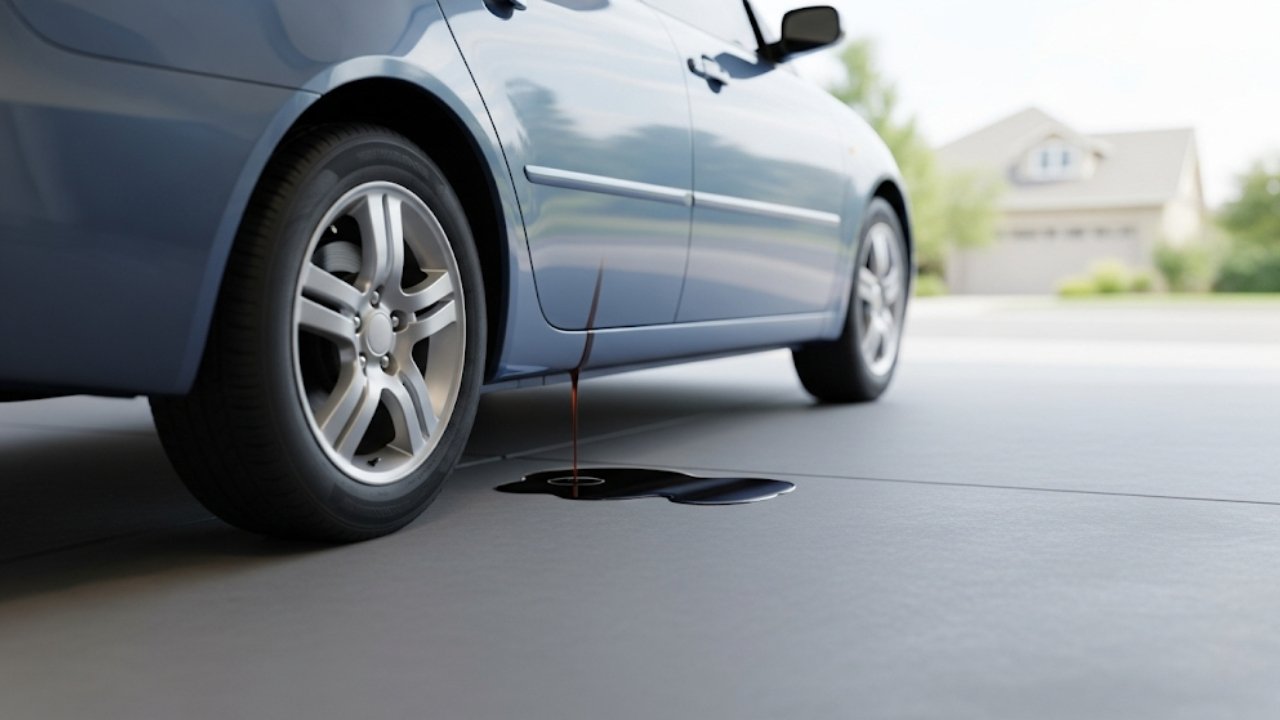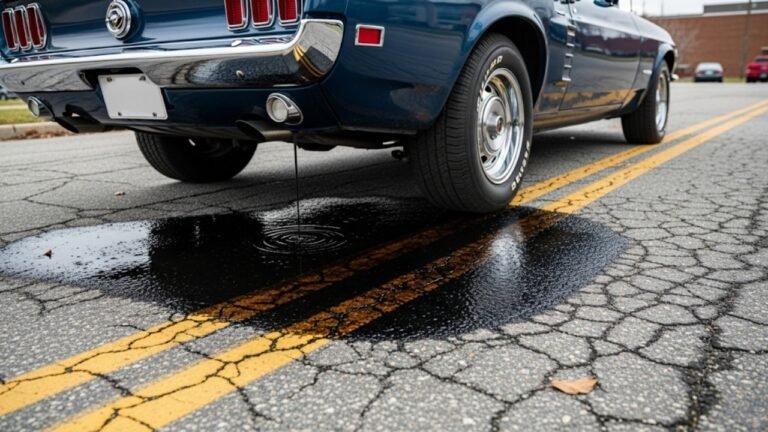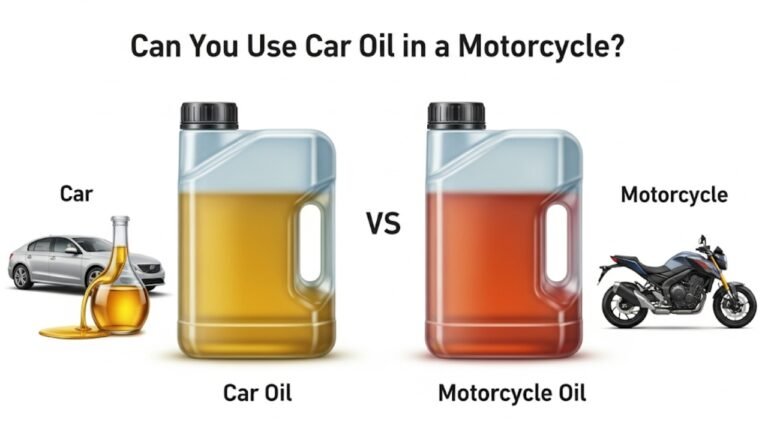Top Reasons for Oil Leak in Car: A Friendly Guide

Ever walked out to your car in the morning and found a slick, dark puddle on your driveway? You’re not alone. That feeling you get—half confusion, half dread—is something every car owner experiences at some point. One of the most common culprits behind those mysterious stains? An oil leak in the car.
It doesn’t matter if you’re driving an old Honda or a shiny new SUV—car oil leaks can happen to anyone. It’s easy to ignore them at first. After all, it’s just a few drops, right? But over time, what seems like a small issue can turn into engine damage, overheating, or even a fire hazard.
In this guide, I’ll walk you through the top reasons for oil leaks in cars, from the simple and fixable to the complicated and costly. We’ll also look at how you can spot leaks early, what to do next, and when it’s time to call a mechanic. Let’s dig into the gritty, greasy truth—without the jargon.
1. Worn Out or Damaged Oil Filter: The Silent Dripper

If your oil filter is loose, cracked, or old, it can cause oil to spill out, especially when your engine heats up. I once had a friend whose car started leaking right after an oil change. Turns out, the shop had installed the wrong size filter! That little error nearly fried his engine.
Also, many people skip oil filter replacements when they change the oil at home. Bad idea. It’s like showering and putting dirty clothes back on.
Signs of Trouble:
-
Fresh oil spots under the engine area.
-
A burning smell while driving.
-
Decreased oil pressure on your dashboard.
Pro Tip: Always replace the oil filter every time you change your oil. It’s cheap and saves you stress.
2. Failing Oil Pan Gasket: When Seals Give Up
The oil pan is like the lunchbox for your engine’s oil—it stores everything. It’s bolted underneath your car and sealed with a gasket to prevent oil from leaking. But over time, heat, debris, and pressure can cause the gasket to crack or warp.
If you’ve ever driven over a speed bump a little too fast (guilty here), you might have damaged your oil pan. A dent or even a tiny crack can slowly let oil seep out.
This is one of the most overlooked reasons for oil leak in car engines, mainly because the oil pan is hidden and tough to inspect without jacking the car up.
Warning Signs:
-
Puddles forming overnight under the car.
-
Oil dripping near the center or back of the engine.
-
Engine smoke or overheating if the oil level drops too low.
Here’s a quick table to summarize typical oil pan gasket issues:
| Issue | Cause | Solution |
|---|---|---|
| Worn gasket | Age, heat cycles | Replace gasket |
| Cracked pan | Hitting road debris or potholes | Replace oil pan |
| Loose bolts | Vibration or poor installation | Tighten or replace bolts |
Keep your eyes (and driveway) open—early detection can save your engine and your wallet.
3. Valve Cover Gasket Leak: The Greasy Culprit on Top
If your car’s engine is the heart, the valve cover is like its hat—keeping everything neat and sealed. The valve cover gasket sits between the cover and the engine, stopping oil from splashing out while it cycles inside.
But over time, this gasket gets brittle and weak. Especially if you live in a place with hot summers or harsh winters, where temperature shifts make materials expand and contract.
When the valve cover gasket leaks, oil starts to spill onto hot engine parts. That’s why sometimes you get that “something’s burning” smell when you’re driving.
Look for These Clues:
-
Oily spots around the top of your engine.
-
A smoky smell coming from under the hood.
-
Reduced engine performance or weird noises.
This happened to my cousin last year. She ignored the smell for weeks—thought it was just old oil. One day, her engine stalled in traffic. A quick check revealed a badly cracked gasket.
Lesson? Don’t ignore smells or sounds that don’t feel normal.
4. Crankshaft or Camshaft Seal Leak: The Hidden Offenders
Now we’re getting into the more technical stuff, but don’t worry—I’ll keep it simple.
Your engine has rotating shafts that control timing and movement. These include the crankshaft and camshaft, and both have seals to keep the oil inside while letting the shafts spin. But like everything else, those seals age. When they get worn out, they start leaking oil slowly, often without any big warning signs.
This kind of oil leak in a car is harder to spot because it usually happens deep in the engine. But if you’re seeing oil all over the timing belt or serpentine belt, this might be the reason.
Symptoms to Watch:
-
Belt slipping or squealing.
-
Oil spots at the front or rear of the engine block.
-
Reduced oil level over time with no visible drip.
Fixing these leaks isn’t DIY-friendly unless you’re a seasoned home mechanic. But it’s essential to fix them before they mess up other parts of your engine.
5. Oil Filler Cap Not Sealed Properly: The Easy-to-Miss Leak
This one might sound silly, but you’d be surprised how often it happens.
The oil filler cap—where you pour new oil—needs to be tightly sealed. If it’s loose, cracked, or missing a rubber gasket, oil can slosh out when the engine runs.
I once checked under the hood of my car after a long road trip and saw oil spattered all over the engine. My first thought? “Oh no, big leak.” But turns out, the cap wasn’t screwed on properly after my last oil change.
Why It Happens:
-
Someone forgets to tighten the cap.
-
The rubber seal wears out.
-
The cap itself is damaged or warped.
Solution? Replace the cap or its gasket. Simple, cheap, and effective.
6. Worn Piston Rings: When Oil Slips Into Places It Shouldn’t
Now this one’s serious. The piston rings help seal the combustion chamber, regulate oil use, and keep the right pressure in your engine. When they wear out, oil doesn’t stay where it’s supposed to. Instead, it can sneak into the combustion chamber and even leak out into the exhaust.
You might not see this leak like a puddle under your car. Instead, it’s more like your engine slowly drinking oil. I had an old Corolla that started burning oil like crazy—no drips, but I had to top it up every week. That’s when I learned what worn piston rings can do.
How to Tell:
-
Blue smoke from the exhaust pipe.
-
Rapid oil consumption without a visible leak.
-
Poor engine performance or power loss.
This issue often shows up in older cars or those that haven’t had regular maintenance. It’s a pricier fix, usually involving an engine rebuild. But if your car’s worth it, it’s worth doing.
7. Faulty PCV Valve: Small Part, Big Mess
The Positive Crankcase Ventilation (PCV) valve may be small, but it plays a big role in keeping your engine clean and efficient. It helps regulate pressure and releases gas buildup from the crankcase. When this valve goes bad or gets clogged, pressure builds up and forces oil out through gaskets and seals.
You wouldn’t think something the size of your thumb could cause an oil leak in a car, but it can! And it’s sneaky because the oil doesn’t leak from one place—it starts coming out wherever the engine is weakest.
Symptoms of a Bad PCV Valve:
-
Oil leaks from multiple spots.
-
Sludge buildup in the engine.
-
Engine misfiring or rough idling.
The good news? It’s one of the cheapest parts to replace. So if you’re dealing with mystery leaks, check this little guy first.
8. Oil Cooler Lines: When Rubber and Heat Don’t Mix
Some engines come with an oil cooler, especially performance vehicles or larger trucks. These systems use rubber or metal lines to transport oil for cooling. But rubber doesn’t like heat for long. After years of exposure, the hoses can crack, shrink, or break down completely.
One summer, my uncle’s pickup truck started leaving trails of oil down the road. We found a cracked oil cooler line—the rubber was as dry as a raisin. A new set of lines cost $40. Not fixing it? That would have cost thousands in engine damage.
Common Signs:
-
Oil leaks near the front of the vehicle.
-
Oil around the radiator or transmission area.
-
Drop in oil levels, especially after long drives.
Always inspect rubber components every few months, especially in hot climates.
When to DIY and When to Call a Mechanic
Now that you know the most common reasons for oil leak in car, you might be thinking, “Can I fix this myself?”
Some leaks are DIY-friendly:
-
Replacing the oil filter
-
Tightening or changing the oil cap
-
Swapping out the PCV valve
But others? Not so much. If you need to remove engine parts or access deep seals, it’s usually safer and faster to get professional help. Sometimes, the cost of a mistake is greater than the cost of a mechanic.
Here’s a quick guide:
| Repair | DIY Level | Time Required | Tools Needed |
|---|---|---|---|
| Oil cap replacement | Easy | 5 mins | None |
| PCV valve replacement | Moderate | 20–30 mins | Wrench set |
| Valve cover gasket | Moderate | 1–2 hours | Socket set, sealant |
| Crankshaft seal | Advanced | 4–6 hours | Pulley puller, jacks |
| Oil pan replacement | Advanced | 3–5 hours | Floor jack, sealant |
If you’re unsure, it’s better to diagnose the leak first, then decide whether it’s worth tackling on your own.
How to Prevent Oil Leaks in the Future
You don’t have to wait for your driveway to become a greasy mess before taking action. Prevention is not only cheaper, but it keeps your car running longer and smoother.
Here are a few simple habits that go a long way:
-
Check oil levels monthly
-
Inspect the engine bay every few weeks
-
Stick to your oil change schedule
-
Replace old gaskets before they fail
-
Use high-quality oil and filters
Also, keep an eye on your car’s oil pressure warning light. It’s like a built-in safety alarm for oil leaks.
Frequently Asked Questions (FAQs)
1. Why is my car leaking oil but the oil level stays the same?
This could mean the leak is very slow, or that the oil is burning inside the engine instead of dripping outside. Check for blue smoke in the exhaust or oily smells inside the cabin.
2. Can I still drive my car with an oil leak?
It depends on how severe it is. A few drops might not cause immediate harm, but large or active leaks can lead to engine failure if ignored.
3. How much does it cost to fix an oil leak in a car?
Costs vary. A loose cap might be free, but replacing crankshaft seals can cost $500–$1000, depending on labor. Most minor leaks range between $100 to $300.
4. How do mechanics find the source of an oil leak?
They often use UV dye and a blacklight. The dye is added to the oil, and under UV light, the path of the leak glows—making it easy to track.
5. Can an oil leak cause engine damage?
Absolutely. Oil keeps your engine cool and lubricated. Without enough oil, friction builds, parts overheat, and your engine can seize up.
6. Is engine oil leaking a serious problem?
Yes. Even small leaks can become large over time. Oil can also damage rubber parts or catch fire if it contacts hot engine components.
7. How long can I drive with an oil leak?
There’s no exact number, but the longer you wait, the higher the risk. Check oil levels often and fix the issue before it worsens.
8. Do oil leaks get worse over time?
Always. Gaskets and seals don’t heal themselves. What starts as a drip often becomes a steady stream if ignored.
Final Thoughts: Don’t Let Oil Leaks Slide
Oil leaks are one of those things that many car owners brush off—until the engine starts knocking or stalls in the middle of nowhere. Trust me, it’s not worth the stress or the repair bills.
If you’re noticing any symptoms or smells, take a moment to look under the hood. A quick inspection today could save you thousands tomorrow. And if you’re not sure what you’re seeing, don’t be afraid to ask a mechanic or even look it up online. Knowledge is power—especially when it comes to your ride.
Remember, the best way to handle an oil leak in a car is to stay ahead of it. Your car takes care of you every day. It’s time to return the favor.






